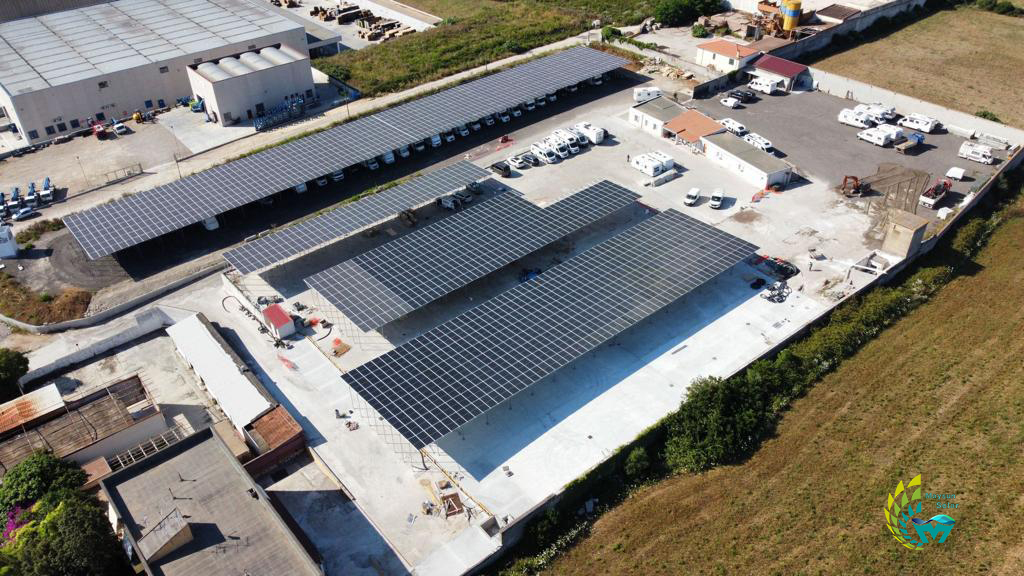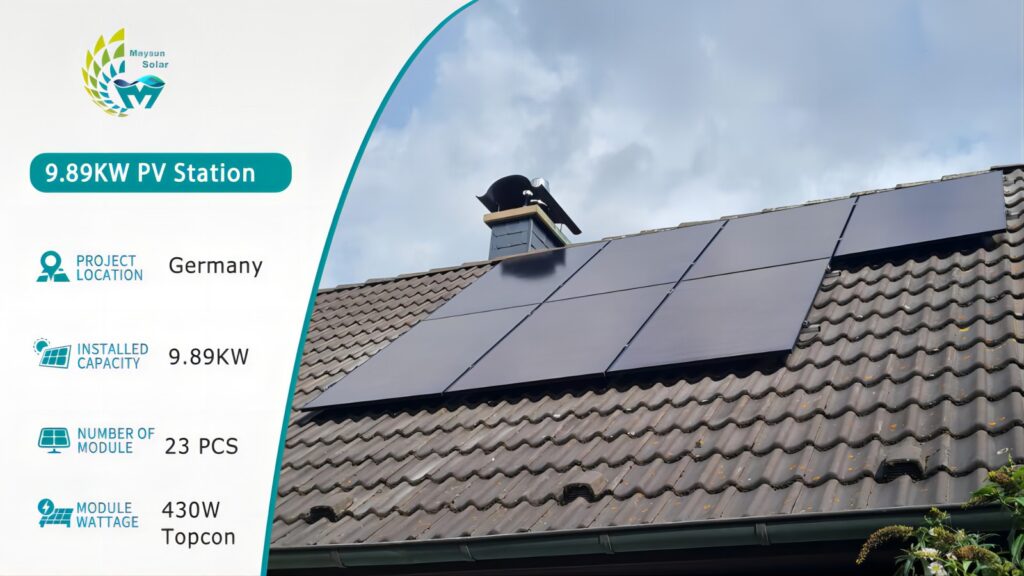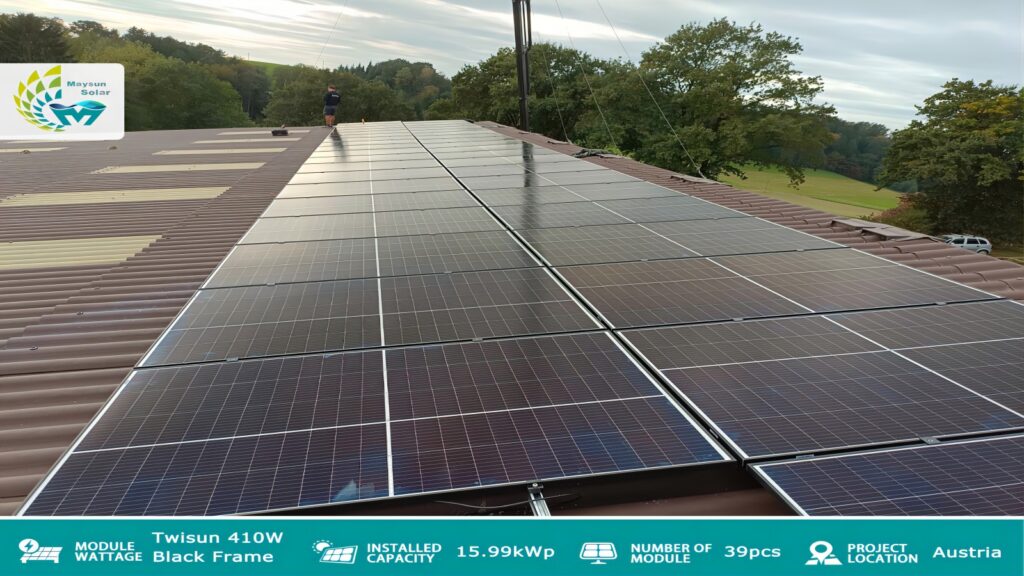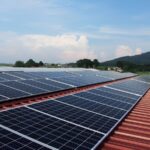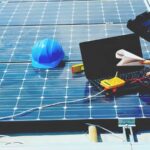Intro:
Solar photovoltaic system is composed of one or more solar panels(also called “solar module”) combined with an inverter and other electrical and Controllers, energy storage systems, etc. This article will introduce in detail the components of the photovoltaic system and the factors that affect the life of the photovoltaic system, thereby guiding you to better maintain the photovoltaic system and extend its service life.
Table of Contents
What are included with the photovoltaic system?
Solar panel (also called “solar module”)
A solar panel (Solar Panel) is a device used to capture sunlight and convert it into electricity. Also known as solar cell modules or photovoltaic panels, they usually consist of multiple solar cell wafers that use the photovoltaic effect to convert solar energy into direct current electricity.
Function: The main function of solar panels is to convert light energy into DC electrical energy.
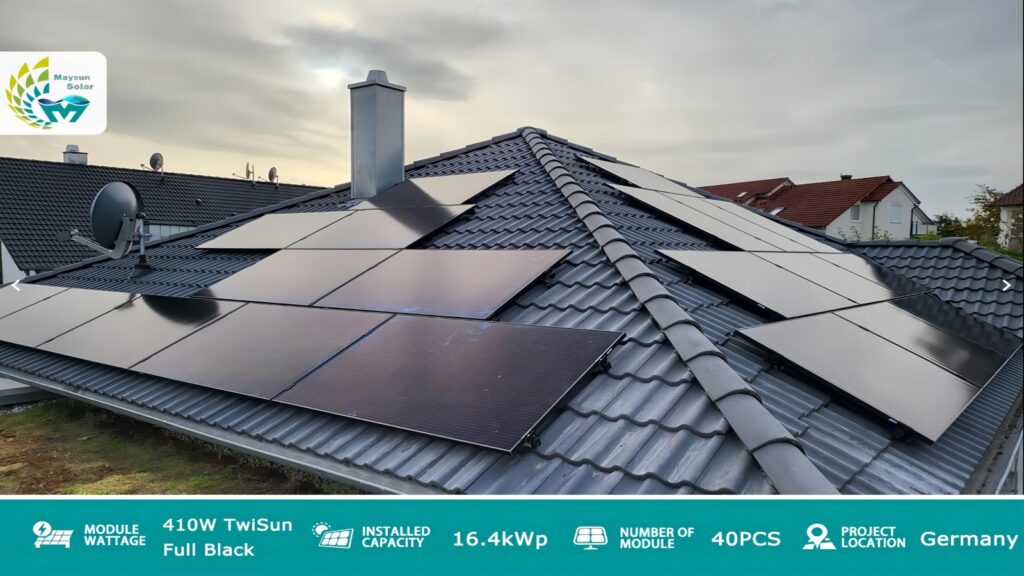
Possible Problems:
(1) Power Failure:
Inadequate Packaging or Backplane Erosion: Inadequate packaging or aging backplane can lead to moisture damage, affecting battery performance. On humid and cloudy days, the inverter may shut down, necessitating refunds or replacements.
High Welding Temperature: Excessive welding temperature can harm the battery cells, causing a drop in power.
Irregular Planning and Design: Poor system planning, irregular installation, and improper grounding can lead to hidden cracks in the battery, causing a potential-induced degradation (PID) effect.
Lightning Strikes: Lightning strikes can damage components or cause diode short circuits in junction boxes, resulting in component failures.
(2) Delamination of solar panels:
Glass Delamination: Delamination between glass and cells can occur due to defects in the adhesive film or contamination on the glass surface.
Backplane Delamination: Delamination between cells and the backplane can result from poor EVA performance or backplane failure.
Inadequate Crosslinking: Inadequate cross-linking of the laminations can lead to wider delamination areas and progressive failure of electrical properties.
(3)Electrical Fires:
Soldering Lobe Issues: Excessive resistance between battery soldering lobes and welding tape due to hot and cold stress can lead to electrical shock fires.
Blockages and Hot Spots: Bird droppings, leaves, debris, and weed blockages can lead to hot spots. Failure to clear them can result in gradually rising temperatures and potential electric shock fires.
(4)Snail Patterns:
Formation of brown lines resembling snail traces on solar panels can occur due to moisture accumulation, defective silver paste during battery production, inflexible battery sheets, or external forces during installation.
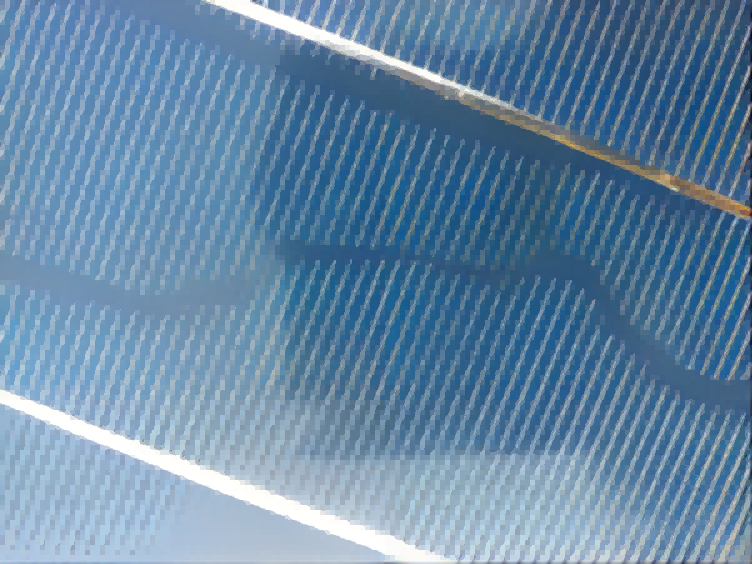
(5)Microcracks:
Tiny microcracks, initially invisible to the naked eye, can expand due to thermal expansion and contraction, potentially interrupting energy flow within the solar module and causing a significant power drop.
Timing of replacement: Usually, replacement can be considered at the end of the life of a solar PV panel, Up to 25 years for single-glass modules, up to 30 years for glass-glass Alternatively, earlier replacement may be necessary if there is visible damage, broken glass, cracks, degradation of performance (usually below 80% of rated power), or severe hot spotting problems.
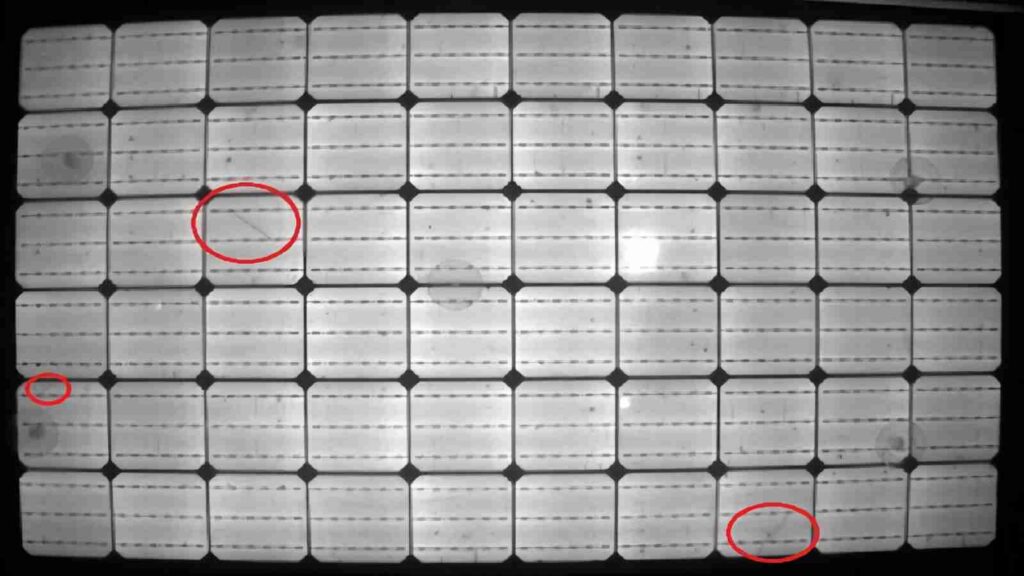
Replacement time:
Single-glass solar panels can last up to 25 years, and glass-glass solar panels can even last up to 30 years, but the actual lifespan depends on a number of factors, including the quality of manufacture, the environment in which they are used and the level of maintenance. Typically, the performance of solar panels decreases to a lesser extent within the first few years, and then tapers off in subsequent years. In the event of serious damage or electrical problems, it may be necessary to replace part or the entire solar panel sooner. Maintenance and regular cleaning can extend the life of your solar panels, and regular inspections and maintenance can help to identify potential problems early.
Inverter
An inverter is a device used to convert the DC electrical energy generated by solar panels into AC electrical energy that can be used in the grid or in household appliances.
Function: An inverter performs the function of converting current from DC to AC.
Possible Problems: Failure of internal electronics, excessive temperature, poor ventilation or excessive moisture.
Timing of replacement: Inverters usually need to be replaced at the end of their lifespan (usually between 10 and 15 years). In addition, it may need to be replaced sooner if there are problems such as power outages, degraded performance, abnormal noises or error codes displayed.
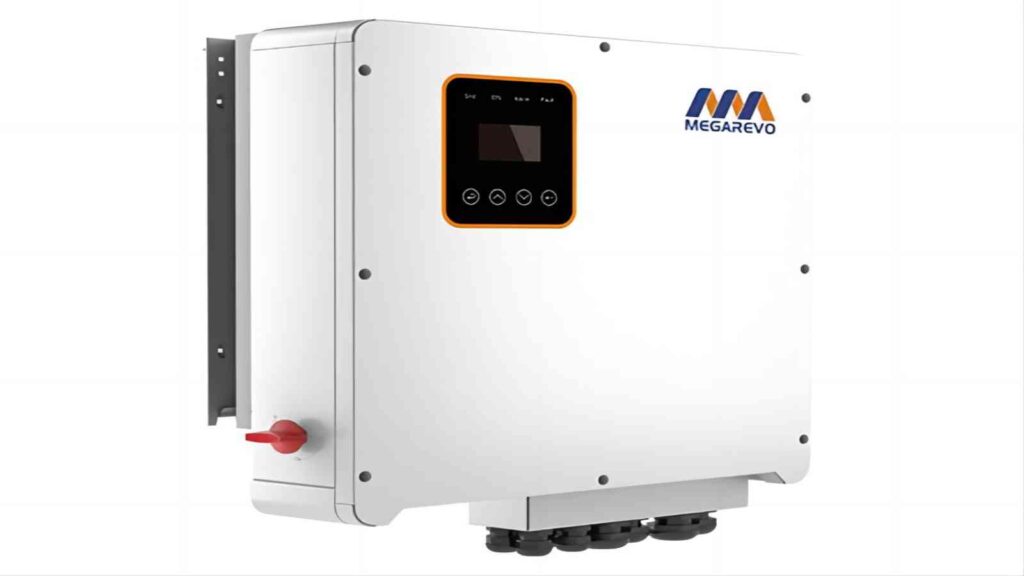
Mounting and Racking Structures
A photovoltaic (solar cell) mounting bracket is a bracket structure used to support and position solar panels.
Function: Supporting Solar Panels: The primary function of a PV mounting bracket is to provide a stable platform for mounting solar panels so that they can face the sun and capture solar energy.
Adjusting the angle: Mounts are often designed with an adjustable angle to ensure that solar panels face the sun at an optimal angle to maximize energy production during different seasons and time periods.
Securing and Protecting: Racks secure solar panels to ensure they are protected from wind, rain and other natural elements.
Problems that tend to occur:
Corrosion and Rust: When exposed to the outdoor environment for long periods of time, the bracket may be affected by corrosion and rust. This may reduce the strength and stability of the bracket.
Material fatigue: The bracket will bear the weight of the solar panels, so material fatigue may occur, especially if it is subjected to frequent wind or other loads.
Positioning Problems: If the bracket is not angled correctly or does not face the sun accurately, the efficiency of the solar panel may be reduced.
Loose screws and connection problems: Mounts are usually made up of multiple screws, nuts, and connectors, and these connecting parts may come loose, causing the mount to become unstable.
Replacement time:
The replacement time for a bracket depends on several factors, including the quality of the bracket, the material, the environment in which it is used, and the level of maintenance. Generally, PV mounts are designed to have a long service life of 20 years or more. However, regular maintenance and inspections are key to extending the life of the mount. If a mount experiences severe corrosion, material fatigue, positioning issues, or other serious damage, it may need to be replaced sooner. In general, it is recommended that PV mounts be maintained and inspected every few years to ensure their safety and performance.
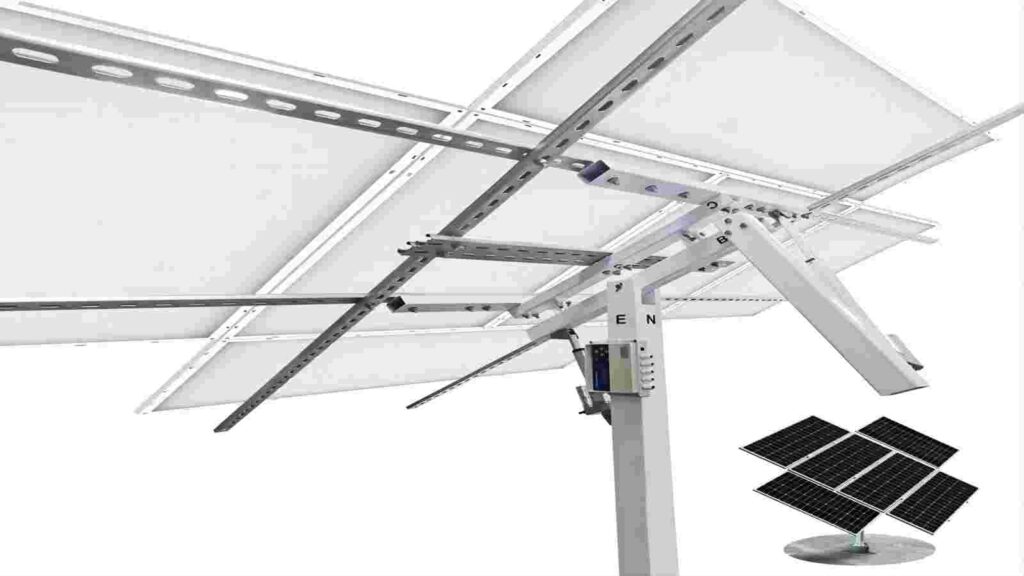
Cables and Connectors
Cables are insulated wires used to transmit electrical energy, while connectors are electronic components used to connect cables to electronic devices.
Potential-induced degradation (PID) and light-induced degradation (LID) are two types of degradation that N-type cells are better able to resist. PID occurs when certain conditions are met, which means that the voltage potential and grounding of the solar cell will make it work less effectively. On the other hand, LID is a short-term power loss that occurs when the module is first placed in sunlight.
In this case, N-type cells last longer than P-type cells because they are less likely to have boron-oxygen defects, which are the main cause of LID in P-type cells. In addition, N-type batteries use phosphorus rather than boron, which makes them more resistant to PID.
As a result, N-type batteries tend to have a slight advantage when comparing their duration and continuous operation. This is because they are more resistant to these degradation processes.
Function: Transmits current and data signals and ensures connections between components.
Possible problems: Deteriorated cables, loose connections, corrosion or breaks.
Timing of Replacement: Taken together,replacement of cables and connectors needs to be considered when deterioration, corrosion, breakage, connection failure or looseness is evident. Regular inspection and maintenance can help detect these problems early.
Monitoring System
Function:
(1) Performance Monitoring: The monitoring system tracks the performance of solar panels and inverters, including parameters such as power production, voltage, current and temperature.
(2) Fault Detection: The monitoring system detects system faults, module failures, or grid issues and alerts O&M personnel so they can take timely action to fix the problem.
Real-time data: Provides real-time data and trend analysis to help O&M personnel understand system performance and make decisions to improve energy production.
(3) Reports and Notifications: Generates performance reports and alert notifications so users can stay informed about the status of the system and take action when necessary.
(4) Remote Monitoring: Allows users to access system performance data from remote locations for real-time monitoring and management.
Problems that can occur:
(1) Communication Problems: Communication connections may be down, preventing the monitoring system from receiving data or sending alarms.
Sensor Failures: Sensors or monitoring devices may fail, resulting in erroneous data or loss of data.
(2) Data Storage Problems: Problems with data storage and processing equipment may occur, resulting in lost or inaccessible data.
(3) Software Updates:Software requires periodic updates to maintain compatibility with the system, but updates may introduce new problems.
Replacement time:
The replacement time for a monitoring system depends on a number of factors, including the quality of the system, maintainability, advances in technology, and the level of maintenance. Typically, the hardware and sensors of a PV monitoring system may need to be replaced in about 10 to 15 years to accommodate new technology and ensure consistent performance. The software component needs to be updated regularly to ensure it is compatible with the latest operating systems and protocols.
What are the factors that affect the life of a solar photovoltaic system?
Factors that affect Solar modules
1. Solar cell type
Monocrystalline cells make up the majority of solar cells on the market today. There are two main types of these monocrystalline cells: P-type and N-type. Both types of cells are thought to have lifetimes of between 25 and 30 years, but their breakdown rates change significantly over time, mainly because N-type cells are manufactured differently.
Potential-induced degradation (PID) and light-induced degradation (LID) are two types of degradation that N-type cells are better able to resist. PID occurs when certain conditions are met, which means that the voltage potential and grounding of the solar cell will make it work less effectively. On the other hand, LID is a short-term power loss that occurs when the module is first placed in sunlight.
In this case, N-type cells last longer than P-type cells because they are less likely to have boron-oxygen defects, which are the main cause of LID in P-type cells. In addition, N-type batteries use phosphorus rather than boron, which makes them more resistant to PID.
As a result, N-type batteries tend to have a slight advantage when comparing their duration and continuous operation. This is because they are more resistant to these degradation processes.
2. Temperature
Solar panels work best between 15°C and 35°C, easily affected by high and low temperatures.
High temperatures(35℃+) have a variety of effects on photovoltaic modules.
1). Power reduction: High temperature will cause the voltage of the solar panel to drop, thereby reducing the power generation capacity of the panel. This results in a reduction in the total power consumption of the panel. results in a reduction in the total power of the PV module.
2). Reduced efficiency: High temperature will reduce the electronic conduction efficiency of solar panels, reduce the efficiency of converting light energy into electrical energy, and reduce the efficiency of converting light energy into electrical energy. energy into electrical energy, and reduce the performance of solar panels.
3). Shortened lifespan: Long-term high temperature exposure may cause the materials of battery panels and other components to age, reducing their lifespan and requiring more frequent maintenance and earlier replacement. Long-term high temperature exposure may cause the materials of battery panels and other components to age, reducing their lifespan and requiring more frequent maintenance and earlier replacement.
4). PID effect: In high-temperature environments, the potential induction effect (PID) may cause the performance of the solar panel to decrease because the charge in the component will leak. the charge in the component will leak.
5). Thermal expansion: Solar panels and their supporting structures expand at high temperatures, which can cause stress and strain between components, thereby increasing the risk of damage. Solar panels and their supporting structures expand at high temperatures, which can cause stress and strain between components, thereby increasing the risk of damage.
Suggestion:
1).Proper installation and positioning: Choose an appropriate installation location to ensure that your solar panels take full advantage of sunlight Proper solar panel tilt and orientation can reduce the risk of overheating.
2).Ventilation and heat dissipation: Keep the area around your solar panels well ventilated to help dissipate heat. Proper ventilation can reduce the Proper ventilation can reduce the rate at which temperatures rise.
3).Cooling system: In large-scale solar cell systems, cooling systems can be considered to reduce the temperature of the solar panels. This can include This can include water cooling or other active cooling technologies.
Low temperature(< 0℃) also has an impact on photovoltaic modules:
1). Power output decreases: At low temperatures, the voltage of solar panels usually increases, but the current decreases, causing the output power of the panels to decrease. This means that during cold weather, solar panels may produce less electricity.
2). Brittleness: Low temperatures can cause solar panels and support structures to become more fragile, increasing the risk of damage. In extremely cold areas, this can lead to freeze cracks, which can cause the solar panels to become more fragile. areas, this can lead to freeze cracks or structural problems.
3). Snow coverage: In cold areas, solar panels may be covered with snow, blocking sunlight and reducing power generation. The weight of snow can also put additional stress on components. The weight of snow can also put additional stress on components.
Suggestion:
1). Regular Cleaning: Regularly inspect and remove snow, ice, or other dirt to ensure that the panel surface remains clean for efficient solar absorption.
2). Use anti-freeze coatings: Use anti-freeze coatings on the surface of the panels to minimize the effects of freezing while increasing transparency for better solar absorption.
3.Dust:
Substances that accumulate on the surface of PV panels may enter the interior of the solar panels through the gaps between the frames, thus shortening the life of the panels.
Dirt spots on the surface of PV panels block power generation, and the shaded solar modules heat up, creating a hot spot effect. This effect can seriously damage the solar cell, accelerating the aging of the module, reducing its lifespan and even causing breakdown and fire.
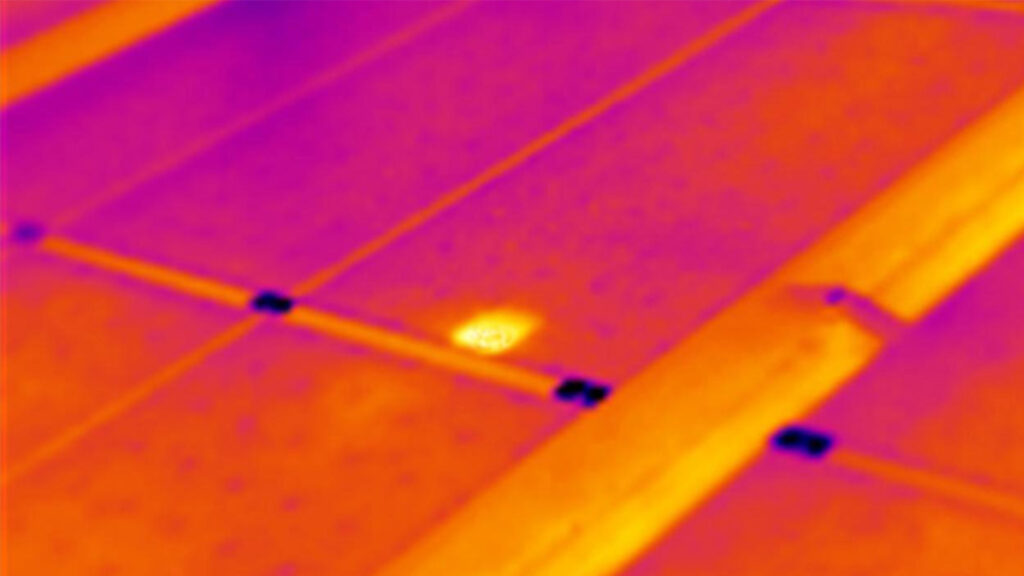
Suggestion:
(1) Regular Cleaning: Clean the surface of the solar panel regularly to remove accumulated dust and dirt. Use a soft brush, water and a non-abrasive detergent for cleaning. Make sure to use caution when cleaning to avoid scratching the panel surface.
(2) Installation Tilt: When installing the panels, use a moderate tilt angle to help dust and dirt clean itself with rain or wind. This helps to minimize the chance of dust accumulation.
(3) Use of Dust Resistant Coatings: Use dust resistant coatings or antifouling coatings on the panel surface to minimize dust adhesion and dirt buildup. These coatings increase the transparency of the panel, which in turn increases the amount of power generated. It is also possible to use self-cleaning glass, which is new in the market, with a nano-coating on the surface, which can be self-cleaning and hydrophobic, oleophobic, and greatly reduce the impact on the power generation of the module.
4. Humidity:
(1) Corrosin and oxidation: Moisture in high humidity environments may trigger corrosion and oxidation, affecting the metal and electronic components of the solar panel. This may reduce the performance and lifetime of the modules.
(2) Electrical Leakage: Humidity and moisture can cause electrical leakage problems, especially in areas such as connectors, wires and electrical contacts. This can lead to loss of electrical energy and degradation of panel performance.
(3) PID effect: Humidity can sometimes promote the occurrence of potentially induced effects (PID), a phenomenon that degrades the performance of battery panels.
(4) Glass Contamination: In high humidity environments, contaminants may accumulate on the glass surface such as water droplets, dust, dirt, etc., which can reduce the transmittance of solar panels, thereby reducing light absorption and electrical energy generation.
(5) Insulation Problems: In humid environments, insulating materials may become less effective, which can lead to short circuits or leakage between electronic components.
Suggestion:
(1) Sealed and waterproof design: Choose solar panels and racking system with good sealing and waterproof performance to avoid moisture penetration inside the module.
The key to waterproofing is the use of an ethylene vinyl acetate (EVA) layer between the solar cells, glass and backsheet. This encapsulation layer plays a key role in protecting the cells from moisture intrusion. The edges of the module are sealed with special tapes or sealants, and the junction box on the back is waterproofed with sealed covers and connectors. The use of weatherproof materials such as TPT (Tedlar-Polyester-Tedlar) or PET for the back plate further ensures protection against moisture.
(2) Regular Inspection and Maintenance: Regularly inspect the panels, wires and connectors to make sure they are not damp or damaged. Repair problems as soon as you find them.
(3) Proper Installation: Ensure that the panels are properly installed and tilted so that rainwater can drain smoothly without accumulating on the module.
(4) Ventilation: Ensure that there is adequate ventilation space on the underside of the panels to minimize moisture buildup. Proper ventilation helps reduce humidity.
Factors affecting the Inverter
1、Inverter internal temperature
The temperature inside the inverter is one of the most important factors affecting the life of the inverter. Excessive temperature will reduce the performance and life of the components. The capacitance inside the inverter is the key factor affecting the life of the inverter. There is a simplest basic principle: the law of ten degrees is that for every 10 degrees of lowering, the life of capacitor doubles; for every 10 degrees of raising, the life of capacitor will be reduced by half.
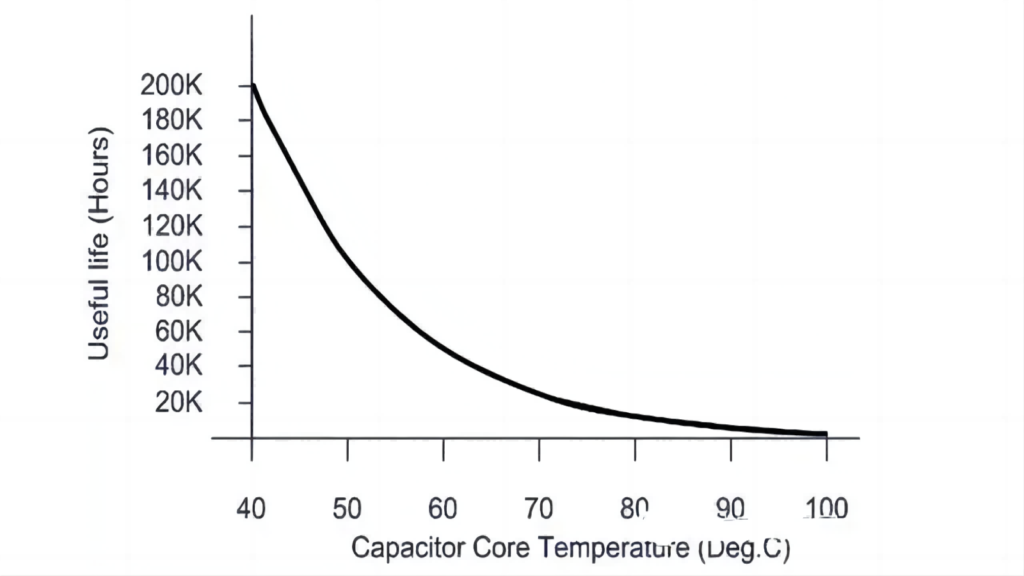
2. Inverter input voltage and current parameters
Improperly matched inverter input voltage and current parameters can also affect the life of the inverter. The higher the voltage or the higher the current of the internal components of the inverter, the shorter the life of the components. Let’s take MAX 100-125KTL3-X series inverter as an example, the input working voltage range of this series inverter is 200-1000V, all the inverters work in this range, the same component input power, the input voltage is too low, the current will be too high, close to the critical state, the input voltage is too high, the current becomes smaller, but the voltage is just close to the critical state, in this case, it will not only affect the power generation efficiency of the inverter, it will also affect the service life of the inverter.
3. Dust
The protection level of the current series of inverters can reach IP65 or even IP66, which is dustproof, rainproof, salt spray corrosion-resistant, and can adapt to the harsh external environment. However, in the case of serious pollution, or more dust, dirty things fall on the radiator, which will affect the function of the radiator, dust, leaves, mud and sand, and other details may also enter the inverter air ducts, which will also affect the heat dissipation, and thus shorten the service life.
Suggestion:
(1) Adaptation to the environment:Select an inverter model that is adapted to typical environmental conditions. Different regions and climatic conditions may require different types of inverters.
(2) Maintenance and Cleaning: Regularly inspect and maintain the inverter to ensure that its exterior is clean and to remove dust and dirt adhering to the surface.
(3) Maintain Ventilation: Ensure that the inverter is installed in a location with adequate ventilation to prevent excessive heating.
(4) Protective Measures: Use appropriate protective measures such as inverter boxes, seals, or shields to prevent rain, dust, and debris from entering the interior of the inverter.
(5) Stabilized power supply: Provide a stable power supply to avoid voltage fluctuations and power quality problems.
Factors affecting the stent fittings:
(1). Material quality: The quality of the materials used for brackets and fittings is one of the key factors affecting their lifespan. The use of high-quality materials usually extends their service life.
(2). Environmental conditions: Environmental conditions such as temperature, humidity, presence of chemicals, and corrosiveness can have an impact on the durability of brackets and fittings. Harsh environmental conditions may cause components to corrode or wear out more quickly.
(3). Loads and stresses: The loads and stresses to which brackets and fittings are subjected can also have an impact on their life. If brackets or fittings are regularly subjected to loads or stresses that exceed their capacity, they may be more susceptible to wear or damage.
(4). Maintenance and care: Regular maintenance and care of brackets and fittings is an important factor in extending their life. Regular inspection, cleaning and lubrication will reduce the risk of wear and damage.
Suggestion:
(1). Quality Control:Ensure that the quality of the bracing system is up to standard, using high quality bracing materials to ensure stability and durability.
(2). Professional Installation:Installation of the bracket system is carried out by experienced professional installers to ensure proper installation and adjustment.
(3). Regular Inspection:Conduct regular routine inspections and maintenance to check the fasteners and connecting parts of the bracket system to ensure that everything is in order.
(4). Risk Assessment: In case of storms, high winds or other extreme weather conditions, consider taking additional protective measures such as unloading or reinforcing the bracing system.
Factors affecting the cables
Temperature:
In summer, the hottest temperatures can reach 40 degrees. Solar cables also generate heat due to thermal effects during use. If the cables continue to work at high temperatures, this can accelerate the deterioration of the insulation, which can lead to cracking and peeling of the insulation.
In winter, especially in areas where the outdoor temperature is below zero, if the cable is placed outdoors or directly on the ground, it is very likely to lead to the shedding of the product skin, because most of the general photovoltaic line products are ordinary plastic (PVC) or rubber in the low temperature of minus degrees Celsius, will make the cable freeze and harden, which will lead to the entire photovoltaic cable product line becomes hard and brittle. If a slight external force is generated, the product may fall off. or damaged.When the above problems occur, replacement can be considered to extend the service life.
Suggestion:
(1). Suitable Cable Selection: Select cables that are weather resistant, UV resistant and resistant to high and low temperatures for outdoor environments.
(2). Correct cable routing: When installing cables, make sure they are routed properly and avoid any excessive tension or bending to minimize the risk of mechanical damage to the cables.
(3). Protecting cables: Use cable jackets, cable ducts, cable pipes or other protective measures to protect cables from physical damage or external stress.
(4). Avoid entanglement and crushing:Avoid allowing cables to become excessively entangled or crushed under sharp objects that could damage insulation and conductors.
Factors Affecting the Monitoring Systems
(1). Hardware Quality: The quality of the hardware devices in a surveillance system, such as sensors, data collectors, communication devices, and computing devices, is critical to the life of the system. Low-quality or non-durable hardware may result in a shorter lifespan.
(2). Environmental conditions: PV systems are typically installed in outdoor environments and exposed to various weather conditions such as high and low temperatures, UV radiation, wind, humidity, etc. These environmental conditions may cause equipment deterioration. These environmental conditions may cause equipment deterioration and corrosion.
(3). Power supply: Unstable power supply or grid problems may affect the normal operation of the monitoring system. Power disturbances and voltage fluctuations may cause damage to hardware devices.
(4). Communication issues: Surveillance systems often need to communicate with data centers or cloud services. Communication issues, such as connection interruptions or data transmission problems, may affect the effectiveness of the surveillance system.
Suggestion:
(1). Regular Maintenance: Perform regular maintenance on your monitoring system, including checking hardware devices, sensors, and cable connections to ensure they are functioning properly. Clean the exterior of the system and sensors to remove dust and dirt.
(2). Periodic Calibration: Perform periodic calibration of sensors to ensure the accuracy of their measurement data.
(3). Regular Software Updates: Regularly update the monitoring system’s software to ensure that it is compatible with the latest operating systems and protocols, as well as to fix any software bugs.
Are there any practical cases on “Lifespan of a photovoltaic system”?
In 2016, a comprehensive survey was conducted in China that involved extensive field and laboratory testing of solar modules that had been in use for several years over a period of several months. This investigation provided a comprehensive assessment of module performance, including electrical efficiency, safety measures and mechanical stress. The study yielded a wealth of data related to module performance, lifetime and power degradation.
Among them, two case studies are worth mentioning:
- Niutian Forestry PV Project, Shiping County, Yunnan Province, China: This PV project was installed in 1995 and has been in operation for more than 20 years until 2016. During this period, the total power attenuation rate of the project was 7.69%, with an average annual attenuation rate of only 0.38%.
- 10kW Photovoltaic Power Station at the Solar Energy Research Base of the Academy of Natural Sciences in Gansu Province, China: This solar power station was installed in 1983 and has been in continuous operation for 33 years until 2016. In spite of the harsh natural conditions, including sandstorms, the total output power of the plant is currently maintained at 7 kW, with an estimated annual decay rate of only 0.9%.
These two cases are strong evidence that solar power plants in different parts of China can still operate optimally after 21 and 33 years of operation, both in hot and humid environments and in sandy and windy environments…. This clearly demonstrates that the expected operational life of a solar power plant can indeed be 25 years or even 30 years or more. Transforming the concept from mere theory into a mature, proven reality.
Maysun’s solar panels are of high quality to ensure long-term use and optimal performance. Choose Maysun for reliability and sustainability.
Maysun Solar provides a diverse range of solar panel choices, including shingled, half-cut, black frame, all-black, and silver frame options. These panels offer exceptional performance and sleek designs that seamlessly blend with various architectural styles. With a global presence, Maysun Solar has offices, warehouses, and strong partnerships with renowned installers. We offer convenient solar panel installation, guaranteeing sustained clean energy production and upkeep. Contact us for the latest module pricing and any photovoltaic-related inquiries.

Empowering Factories with Solar Energy A Strategic Tool for Controlling Production Electricity Costs
Commercial and industrial solar is becoming a key solution for factories to reduce electricity costs and hedge against price fluctuations. This article systematically analyzes its deployment models, cost advantages, and sustainable value pathways.

How Businesses Can Offset Carbon Taxes with Solar Power
This article analyzes the latest carbon tax policies and photovoltaic deduction strategies, helping European businesses legally reduce taxes, increase profits through solar investment, and achieve a win-win situation for both economy and environment.

Forecast and Response: Seizing the Next Decade’s Growth Dividend in Europe’s Commercial and Industrial Photovoltaics Market
Maysun Solar analyzes the growth trends of commercial and industrial photovoltaics in Europe over the next ten years, from policies and ESG to technological innovation, helping companies seize the initiative in the energy transition.

How to Calculate Solar System ROI and Optimize Long-Term Returns?
Solar power is becoming a key solution for businesses to reduce costs and improve efficiency. Accurately calculating ROI and optimizing long-term returns are essential to maximizing investment value.

Will Agrivoltaics Affect Crop Growth?
Agrivoltaics combines solar energy and agriculture to reduce up to 700 tons of CO₂ per MW, improve water use, and boost crop growth for sustainable farming.

6.5 Billion Loss Hits Photovoltaics: Reshaping or Elimination?
In 2025, the photovoltaic market may see a turnaround as some companies take early action. A €6.5 billion loss is driving businesses to explore new growth areas like energy storage and hydrogen. Which giants will break through? Industry transformation is accelerating!

